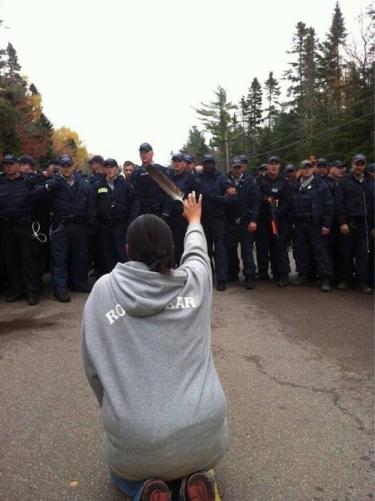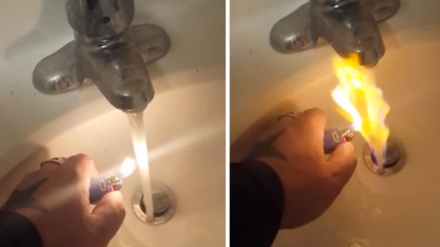I’ve made good progress on Naomi Klein’s This Changes Everything: Capitalism vs the Climate, closing in on the last 100 pages. I have learned some amazing things:
- In 2013, the oil and gas industry spent nearly $400,000 a day lobbying Congress and government officials. Yes, that is $400,000 a DAY. Just in the United States.
- Agroecology, a farming method using sustainable methods coupled with modern science and local knowledge, produces more per acre than industrial farming while limiting use of expensive products such as chemical pesticides, fertilizers, and patented seeds. Not only are these methods better for the soil, they sequester carbon in the soil, avoid fossil-fuel based fertilizers, and tend to use less carbon for transportation to market (primarily because they are often local or regional).
- Most fracking operations are exempt from regulations of the Safe Drinking Water Act. (This is referred to as the Halliburton Loophole.) But fracking has been found to put drinking water—including aquifers—at risk. An Alberta study found that methane concentrations were six times higher in water wells within a kilometer of a fracked gas well. Some people can start their tap water on fire!
Exxon CEO Rex Tillerson has joined a lawsuit opposing fracking-related activities near his Texas home. Even the perpetrators know it’s not a good thing to have in your backyard. Much better that it’s someone else’s backyard. But that’s the problem with the growth in exploring, fracking, and extracting: It’s closer to pretty much everyone’s backyard. Even CEOs with $5 million homes. But in a way, that’s also the good news. It’s no longer hidden in remote areas or “sacrifice zones.”
As these extreme forms of oil and gas extraction expand, so does the pushback from local communities.
- In Greece, they are fighting a plan to cut down old-growth forest and reengineer the local water system (yikes!) in order to build a huge open-pit gold and copper mine, along with a processing plant and a large underground mine.
- Pungesti, a farming community in Romania, built a protest camp in response to the country’s first shale gas exploration well.
- In New Brunswick, Canada, they are opposing seismic testing ahead of a possible fracking operation.
- Numerous protests and blockades have arisen in the rural U.K., often blocking access to fracking sites. (About half of the land in Great Britain is under consideration for fracking.)
- Herders in Mongolia are protesting plans to increase open-pit coal mining.
- In New South Wales, Australia, opposition to increased coal mining continues to grow.
There have been victories! When the natural gas industry tried fracking around Ithaca, New York, they faced formidable opposition including researchers at Ithaca-based Cornell University. The research conducted not only kept fracking out of Ithaca but contributed to more than 150 fracking bans and moratoriums across the state of New York.
After efforts to open the South of France to fracking, France became the first country to adopt a nationwide fracking ban.
It’s enough to give one hope.
 It didn’t surprise me to learn that women are playing a prominent role in these protests. In New Brunswick, the image of a Mi’kmaq mother, kneeling in the middle of a road before a line of riot police, holding up a single eagle feather, was seen around the world.
It didn’t surprise me to learn that women are playing a prominent role in these protests. In New Brunswick, the image of a Mi’kmaq mother, kneeling in the middle of a road before a line of riot police, holding up a single eagle feather, was seen around the world.
And it isn’t just blockades and protests that are cropping up. There is a growing campaign calling for a worldwide ban on offshore drilling in the Arctic region as well as the Amazon. There is also a push for a global moratorium on tar sands extraction anywhere in the world.
Divestment is another strategy that is growing some decent legs.
Under increasing pressure, the World Bank (as well as several other large international funders that Klein doesn’t name) has announced that they will no longer offer financing to coal projects (“except in exceptional circumstances,” which sounds like a major loophole to me).
Young people have been particularly involved in the divestment movement, most especially at colleges and universities. Their rationale: These are the institutions entrusted to prepare them for their future, and it is the height of hypocrisy for those same institutions to profit from an industry that is basically destroying their future. The movement is growing. Within six months of its launch (toward the end of 2012), there were divestment campaigns on more than 300 campuses, and more than 100 cities, states, and religious institutions. More and more, these organizations are announcing they will divest their endowments of fossil fuel stocks and bonds.
More hope.
There is much more to do (and nearly 100 pages more to read in the book), but I no longer feel so lonely on this issue. And I know there are things I can do. Like contact my alma mater and ask them to divest. Ditto some of our local foundations. Next steps.
